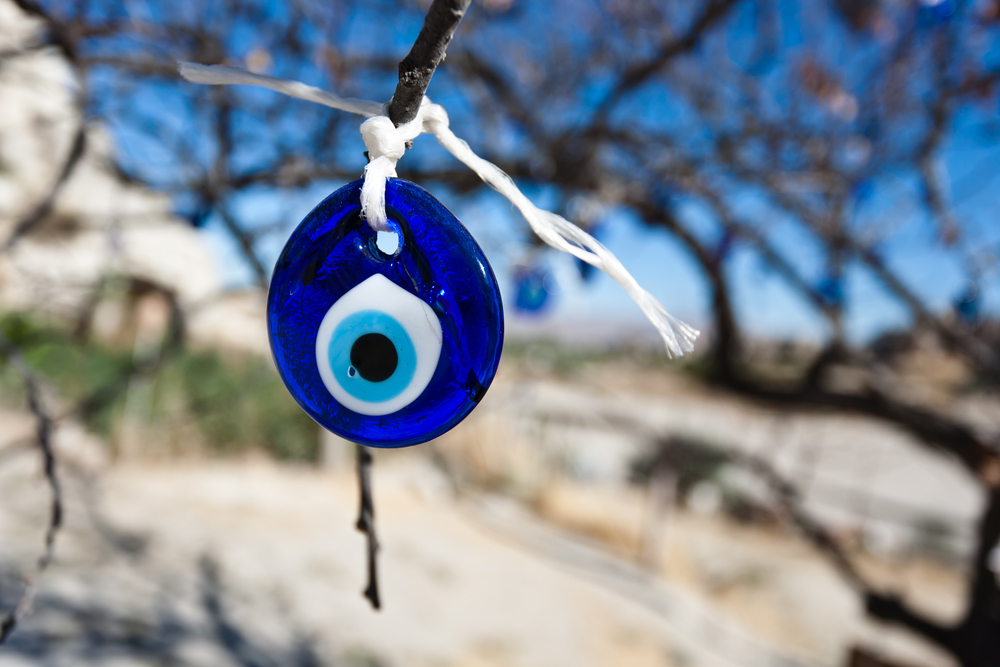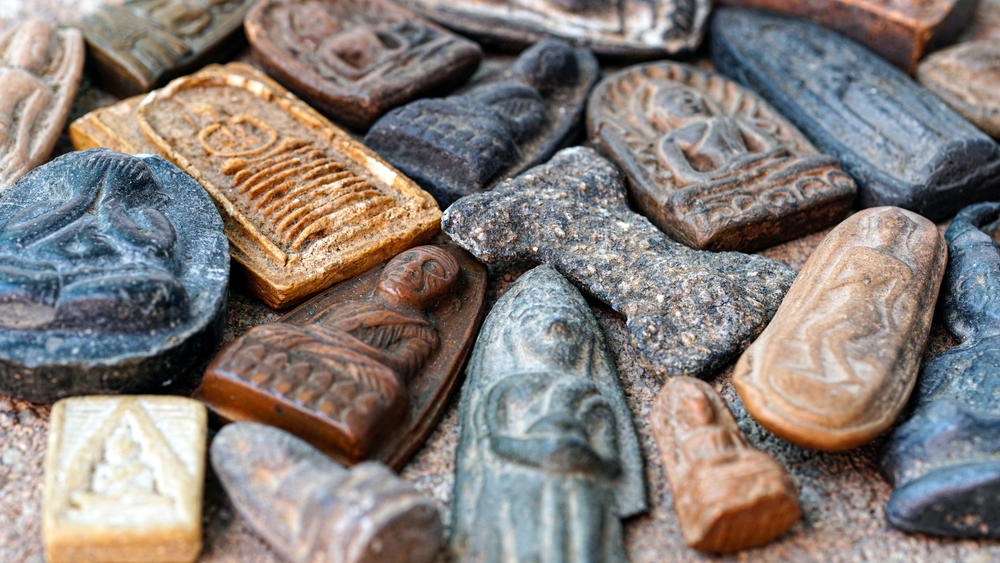
If you follow news on the British royal family, you may have seen photos of a mysterious blue and white pendant worn by Meghan, Duchess of Sussex. This piece of jewelry looks intriguing, but it’s more than just a fashion statement – it has a deeper symbolism that’s thousands of years old. To find out why the Duchess’s pendant is a big deal, we need to take a trip through unexpected mythological territory: the legend of the evil eye.
Ancient Evidence in Egypt, Mesopotamia, and Europe
Ancient Middle Eastern cultures linked the eyes to supernatural power. The most prominent example comes from Egypt – the Eye of Horus. According to ancient Egyptian mythology, Horus was the son of Osiris and Isis. Dictionary.com mentions the legend in which Horus loses an eye battling his uncle Set. Some versions of the tale say that the goddess Hathor restored his eye. Horus then helped resurrect his father, Osiris, by giving him the regenerated eye.
Other ancient cultures associated the eyes with the potential to cause harm. As Elaine Smith explains in a New York Times piece, an envious or hateful look carried evil that could harm living beings and inanimate objects. Even if one’s gaze didn’t reflect obvious envy or hatred, it still held malicious intent. By gazing or glaring, it was possible to curse another person. That’s the evil eye belief in a nutshell.
Journalist Leila Ettachfini mentions that this belief has existed for a few thousand years. Archaeologists discovered 5,000-year-old Sumerian clay tablets containing prayers to keep away evil eye curses. They’ve also found evil eye imagery within 10,000-year-old paintings on the walls of a Spanish cave.
The Dangers of Paying Compliments
The evil eye embodies envy. And while envy and coveting aren’t technically the same thing, they are closely related. Merriam-Webster defines coveting as feeling “inordinate desire for what belongs to another.” The Jewish Torah warns against this in its Tenth Commandment. But other faiths address excessive longing or desire. There’s the Buddhist concept of tanha, which usually translates as “craving” or “thirst.” Tanha is responsible for human suffering, which fuels the death and rebirth cycle.
Envy and coveting produce destructive outcomes if we act on them. But what if you admire something that another person has – say, a gorgeous jacket? If you’re in the Middle East, you’re better off keeping it to yourself. Some believe that even well-intentioned compliments can bring the evil eye curse. Boasting and pride may also bring it on oneself.
Amulets and Other Magical Protection
Ancient Egyptians wore protective amulets bearing the Eye of Horus to ward off sickness, injuries, and death. But they were intended to shield against general misfortunes. Evil eye amulets, charms, and talismans have specific purposes. They’re forms of apotropaic magic, intended to shield their wearers from misfortune. And they exist in many cultures around the world.
Many evil eye amulets come from the Middle East. Jewish blogger Menachem Wecker mentions the hamsa, an ornate metal hand with an eye inside its palm. The hamsa may have Islamic origins, but it made its way into neighboring Jewish cultures. You’ll also see other types of amulets across the region. The most common version is a blue disc with a single eyeball at its center, usually with a blue iris. You may find them hanging from trees, but they also show up as pendants or bracelet charms.
A Human Coping Mechanism?
With a balanced locus of control, we recognize that we cannot dictate others’ actions. Yet their deeds can still harm us. Strangely enough, the evil eye belief can be an adequate coping mechanism. Rather than trying to control others, we can take measures to deal with our own emotions and provide comfort to ourselves. And for millions of people around the world, evil eye amulets accomplish that very purpose.



